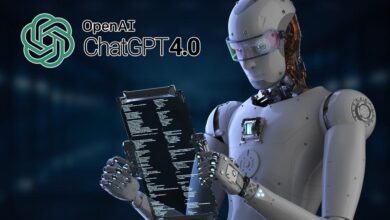What is ChatGPT AI?

ChatGPT is a state-of-the-art language model developed by OpenAI, one of the leading research organizations in the field of artificial intelligence. The model is based on the Transformer architecture, which was introduced by Google in 2017 and has since become a standard for natural language processing tasks.
Goal of ChatGPT
The primary goal of ChatGPT is to generate human-like responses to text-based inputs, such as questions or prompts. This is accomplished through a process called language modeling, which involves training the model on large amounts of text data in order to learn patterns and relationships between words and phrases. The resulting model can then generate new text that is consistent with the patterns it has learned, resulting in responses that are often indistinguishable from those of a human.

When ChatGPT was released
One of the key advantages of ChatGPT over previous language models is its size and training data. The initial version of the model, released in June 2020, was trained on a massive dataset of over 45 terabytes of text data, including books, articles, and web pages. This allowed the model to learn a wide range of patterns and relationships between words and phrases, as well as to understand the nuances of language and context that are necessary for generating high-quality responses.
Another key feature of ChatGPT is its ability to fine-tune for specific tasks. This means that the model can be trained on smaller, task-specific datasets to improve its performance on specific types of inputs. For example, a version of the model might be fine-tuned on a dataset of customer service conversations in order to generate more accurate and helpful responses to customer inquiries.
ChatGPT has been used in a wide range of applications since its release. One of the most common uses is in chatbots and virtual assistants, where the model can generate responses to user inquiries in real-time. Other applications include language translation, text completion, and content creation, where the model can be used to generate new text based on existing content or to complete unfinished text.
Artificial Intelligence
ChatGPT is a practical applications, ChatGPT has also been the subject of extensive research in the field of artificial intelligence. Researchers have explored the model’s ability to understand language and context, as well as its limitations and potential for bias. Some studies have also explored the ethical implications of language models like ChatGPT, particularly in areas such as privacy, security, and fairness.

ChatGPT represents a significant step forward in the field of natural language processing and artificial intelligence. Its ability to generate high-quality responses to text-based inputs has the potential to revolutionize a wide range of applications, from customer service to content creation. However, it is important to continue to explore the limitations and ethical implications of this technology in order to ensure that it is used in a responsible and beneficial way.
Stay tuned and be connected with The Facts hub, and never miss the update of interesting knowledge from round the world.




